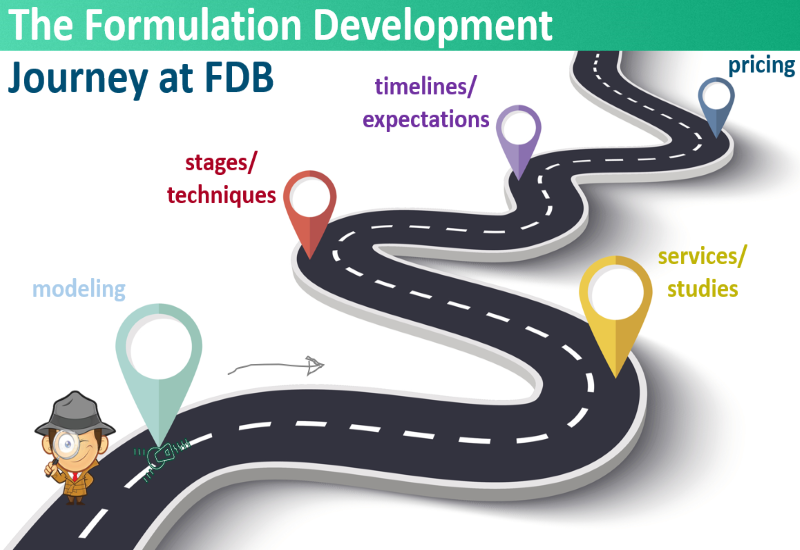The Formulation Development Journey at FUJIFILM Diosynth Biotechnologies

It is a common misconception that the road to a successful biologic formulation is a well-worn and well-known path that is easy to travel. We must keep in mind that every molecule has its own “personality,” and therefore, can respond very differently to stressors, conditions, and formulation components, even if the only change is one amino acid. The road that seems to be well-traveled will inevitably have some surprising twists and turns that are better navigated with strong, scientific, data-driven decisions along the journey. Successful formulation journeys start with a roadmap where scientific studies and decision points are used to create a route for understanding a molecule’s personality and its viability to help it along the way to the ultimate user – the patients.
“We must keep in mind that every molecule has its own “personality” – even if the only change is one amino acid.”
In the arena of formulation development, the roadmap is composed of molecular information that is collected using innovative, information-rich and scientifically-sound computational, biophysical and biochemical analysis. With our proven techniques and methods, we collect as much information as possible about your molecule, so we can prepare a detailed roadmap for you. Here is a quick look at some of the critical statements and questions we ask to examine your molecule and understand its personality (strengths and liabilities):
- Using structural modeling software, we start with the sequence of your molecule to answer: where are the “hot spots” for potential aggregation or chemical degradation?
- Using biophysical analysis, we go deeper to look at:
- How well is your molecule folded as indicated by spectroscopy (Circular Dichroism, Fluorescence, FTIR) and stability analysis (Differential Scanning Calorimetry, Isothermal Chemical Denaturation)?
- How likely is your molecule to self-associate by light scattering (Dynamic Light Scattering, Multi-angle Light Scattering in-line with SEC or Composition Gradient-MALS), and by ΔG trending with Isothermal Chemical Denaturation?
- Will particulates become an issue during the stress of purification and formulation (Micro-Flow Imaging MFI™, HIAC™, Horizon™ and AURA™)?
- Using biochemical techniques, we look at profiles and rate of degradation:
- What potential chemical degradation mechanisms might be at play (Mass Spectrometry, SE-HPLC, Reduced and non-reduced CE, or icIEF)?
View video about our Formulaton Development Approach
Read the full article here





















